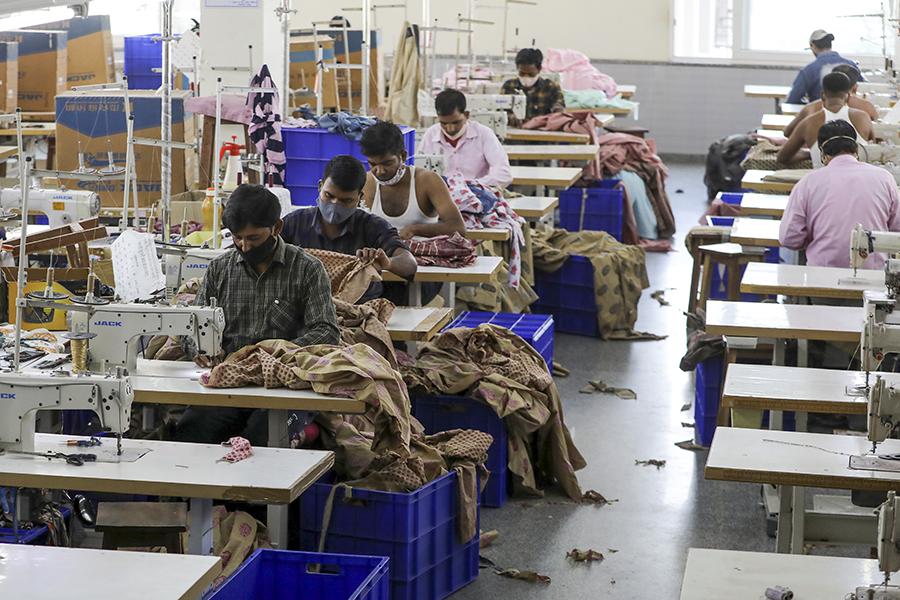Budget 2021: Focus on manufacturing will aid India's economic recovery
Electronics, automobile and pharmaceuticals, including healthcare manufacturing, are areas where India has a great growth opportunity
The Union Budget 2021 was presented against the backdrop of an economy that has contracted for the first time in the past four decades. The Reserve Bank of India (RBI) further expects India’s GDP to contract by around 8 percent, per International Monetary Fund (IMF) estimates. Perhaps this is why the primary focus of the recently announced budget was around creating demand across sectors, in an effort to bring the economy back on track.
To enable this, it is the manufacturing sector that will have to play an important role in the Indian economy’s recovery story. While many new schemes and projects have been announced, focus on the implementation model and learnings from the past will result in the successful realisation of these important announcements.
From a manufacturing perspective, the budget achieves the following three objectives amongst many others:
Leveraging the Indian consumption story
The Covid-19 crisis created a major demand shock across the world and led to a contraction in a majority of the manufacturing sectors. However, certain sectors that are driven by India’s consumption story and where India is critical for global consumption required a much-needed push to help them remain aligned to the country’s growth. Electronics, automobile and pharmaceuticals, including healthcare manufacturing, are areas where India has a great growth opportunity from the perspective of both domestic and export markets. The announcement in the recent budget bringing 13 sectors with an outlay of Rs 1.97 lakh crore under the production-linked scheme over the next five years will incentivise manufacturers to expand production and generate additional investment and job opportunities. These opportunities will be beneficial for both the domestic and the export market. The voluntary vehicle scrapping policy will drive the demand for automobiles in the country and generate new investment avenues in the sector. It will now be critical to come out with clear implementation guidelines to enable participation of the private sector.
Enabling the development of a competitive industrial ecosystem
Infrastructure and industrial infrastructure gaps required adequate attention. The budget’s focus on creating a competitive manufacturing ecosystem to enable new domestic and Foreign Direct Investments (FDI) is visible through a higher outlay for infrastructural investments. The scheme for seven mega integrated textile parks intends to develop economies of scale and large employment opportunities in labour-intensive sectors like textile.
The government may need to think about the location of these mega parks and the required implementation model. The projects would need alignment with existing manufacturing ecosystems (part of large industrial clusters or zones) for the readiness of investments and clear incentive and implementation guidelines for investors (developers and tenants) in the zone. Leveraging learnings from earlier schemes will be a pragmatic move. Likewise, new economic corridors will be required to not only focus on transport connectivity but enable end-to-end supply chains in the country to generate confidence in India as an investment destination. It will be important that feedback from enough investors is taken to make sure these initiatives are not seen as supply-side initiatives but demand-driven projects. New private-sector port projects announced in today’s budget will enable generating efficiency in our logistics and trading setup.
Continued focus on MSME-linked investments
95 percent of Indian businesses are still micro-enterprises and need to transition into small and eventually large businesses. MSMEs (Micro and small and medium enterprises) need the government as an anchor to enable this transition. The budget announced the doubling of an outlay for MSMEs to the tune of Rs 15,700 crore which is very positive, though one will need to review how the allocations have been worked out. One of the key areas where one hopes allocations have been made is enabling MSMEs to adopt quality infrastructural, technological and digital interventions to solve their productivity, financing and demand-linked challenges. For supply-side interventions, higher powers and budgetary discretion may be required at the district level so that interventions are tightly aligned to industrial needs in the district. District-level export cells integrated with the current institutional framework for industrial development could enable businesses to focus on a localised level.
The author is Partner – Economic Development and Infrastructure, PwC India
The thoughts and opinions shared here are of the author.
Check out our end of season subscription discounts with a Moneycontrol pro subscription absolutely free. Use code EOSO2021. Click here for details.
